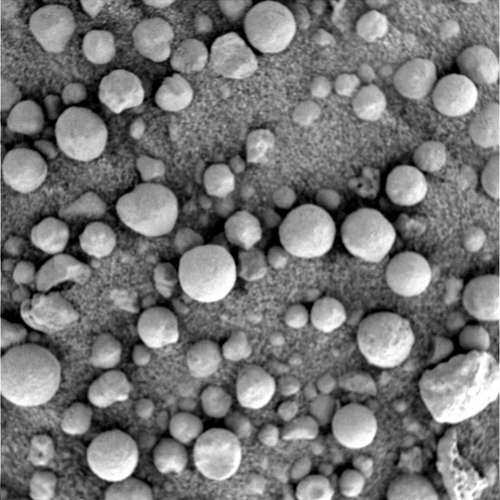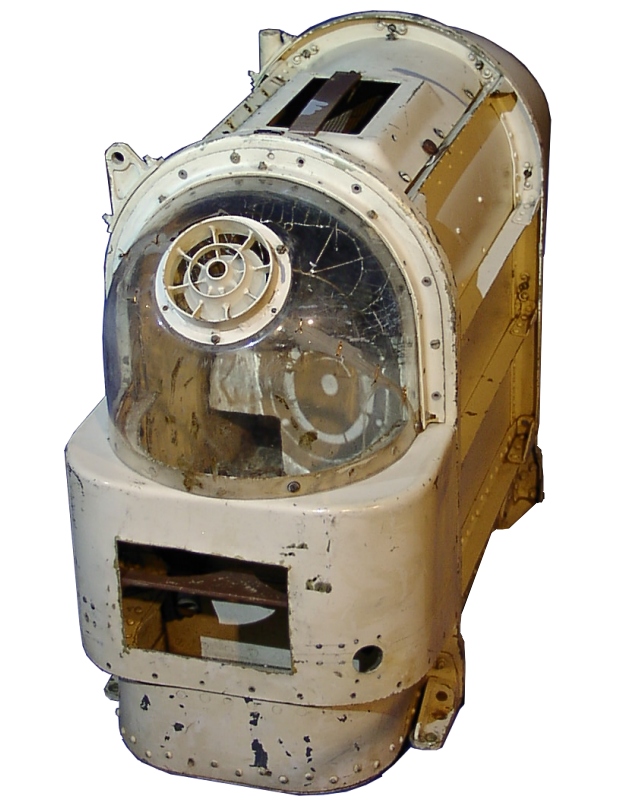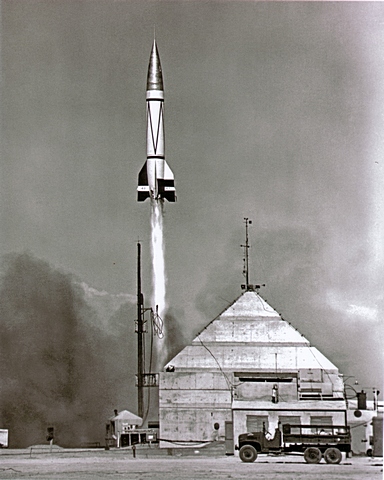|
Laika
Laika (russian: link=no, Лайка; – 3 November 1957) was a Soviet space dog who was one of the first animals in space and the first to orbit the Earth. A stray mongrel from the streets of Moscow, she flew aboard the Sputnik 2 spacecraft, launched into low orbit on 3 November 1957. As the technology to de-orbit had not yet been developed, Laika's survival was never expected. She died of overheating hours into the flight, on the craft's fourth orbit. Little was known about the impact of spaceflight on living creatures at the time of Laika's mission, and animal flights were viewed by engineers as a necessary precursor to human missions. The experiment, which monitored Laika's vital signs, aimed to prove that a living organism could survive being launched into orbit and continue to function under conditions of weakened gravity and increased radiation, providing scientists with some of the first data on the biological effects of spaceflight. Laika died within hours f ... [...More Info...] [...Related Items...] OR: [Wikipedia] [Google] [Baidu] |
Sputnik 2
Sputnik 2 (, russian: Спутник-2, ''Satellite 2''), or Prosteyshiy Sputnik 2 (PS-2, russian: Простейший Спутник 2, italic=yes, ''Simplest Satellite 2'') was the second spacecraft launched into Earth orbit, on 3 November 1957, and the first to carry a living animal, a Soviet space dog named Laika. Laika died on the fourth orbit due to overheating caused by an air conditioning malfunction. Launched by the Soviet Union, Sputnik 2 was a cone-shaped capsule with a base diameter of that weighed around , though it was not designed to separate from the rocket core that brought it to orbit, bringing the total mass in orbit to . It contained several compartments for radio transmitters, a telemetry system, a programming unit, a regeneration and temperature-control system for the cabin, and scientific instruments. A separate sealed cabin contained the dog Laika. Engineering and biological data were transmitted using the Tral D telemetry system, transmitting da ... [...More Info...] [...Related Items...] OR: [Wikipedia] [Google] [Baidu] |
Soviet Space Dog
During the 1950s and 1960s the Soviet space program used dogs for sub-orbital and orbital space flights to determine whether human spaceflight was feasible. In this period, the Soviet Union launched missions with passenger slots for at least 57 dogs. The number of dogs in space is smaller, as some dogs flew more than once. Most survived; the few that died were lost mostly through technical failures, according to the parameters of the test. A notable exception is Laika, the first animal to be sent into orbit, whose death during the 3 November 1957 Sputnik 2 mission was expected from its outset. Training Dogs were the preferred animal for the experiments because scientists felt dogs were well suited to endure long periods of inactivity. As part of their training, they were confined in small boxes for 15–20 days at a time. Stray dogs, rather than animals accustomed to living in a house, were chosen because the scientists felt they would be able to tolerate the rigorous and ... [...More Info...] [...Related Items...] OR: [Wikipedia] [Google] [Baidu] |
Animals In Space
Animals in space originally served to test the survivability of spaceflight, before human spaceflights were attempted. Later, other non-human animals were flown to investigate various biological processes and the effects microgravity and space flight might have on them. Bioastronautics is an area of bioengineering research which spans the study and support of life in space. To date, seven national space programs have flown animals into space: the United States, Soviet Union, France, Argentina, China, Japan and Iran. A wide variety of animals have been launched into space, including monkeys and apes, dogs, cats, tortoises, mice, rats, rabbits, fish, frogs, spiders, quail eggs (which hatched in 1990 on ''Mir''), and insects. The US launched flights carrying primates primarily between 1948 and 1961, with one flight in 1969 and one in 1985. France launched two monkey-carrying flights in 1967. The Soviet Union and Russia launched monkeys between 1983 and 1996. During the 1950s and ... [...More Info...] [...Related Items...] OR: [Wikipedia] [Google] [Baidu] |
Canis Familiaris
The dog (''Canis familiaris'' or ''Canis lupus familiaris'') is a domesticated descendant of the wolf. Also called the domestic dog, it is derived from the extinct Pleistocene wolf, and the modern wolf is the dog's nearest living relative. Dogs were the first species to be domesticated by hunter-gatherers over 15,000 years ago before the development of agriculture. Due to their long association with humans, dogs have expanded to a large number of domestic individuals and gained the ability to thrive on a starch-rich diet that would be inadequate for other canids. The dog has been selectively bred over millennia for various behaviors, sensory capabilities, and physical attributes. Dog breeds vary widely in shape, size, and color. They perform many roles for humans, such as hunting, herding, pulling loads, protection, assisting police and the military, companionship, therapy, and aiding disabled people. Over the millennia, dogs became uniquely adapted to human behavior, an ... [...More Info...] [...Related Items...] OR: [Wikipedia] [Google] [Baidu] |
Samoyed (dog)
The Samoyed ( or ; russian: Самое́дская соба́ка or Самое́д) is a breed of medium-sized herding dogs with thick, white, double-layer coats. They are a spitz-type dog which takes its name from the Samoyedic peoples of Siberia. Descending from the Nenets Herding Laika, they are a domesticated animal that assists in herding, hunting, protection and sled-pulling. Samoyed dogs are most often white, and can have a brown tint to their double-layer coat which is naturally dirt repellent. They are known to be used in expeditions in both Arctic and Antarctic regions and have a friendly and agreeable disposition. Lineage The progenitor of the Samoyeds was the Nenets Herding Laika, a reindeer herding spitz commonly used throughout northern Siberia, especially the Nenets people who were pejoratively referred to as Samoyeds at that time. DNA evidence confirms that Samoyeds are a basal breed that predates the emergence of the modern breeds in the 19th c ... [...More Info...] [...Related Items...] OR: [Wikipedia] [Google] [Baidu] |
Soviet Space Program
The Soviet space program (russian: Космическая программа СССР, Kosmicheskaya programma SSSR) was the national space program of the former Union of Soviet Socialist Republics (USSR), active from 1955 until the dissolution of the Soviet Union in 1991. Soviet investigations in rocketry began with the formation of a research laboratory in 1921, but these efforts were hampered by the devastating war with Germany. Competing in the Space Race with the United States and later with the European Union and China, the Soviet program was notable in setting many records in space exploration, including the first intercontinental missile that launched the first satellite and sent the first animal into Earth orbit in 1957, and placed the first human in space in 1961. In addition, the Soviet program also saw the first woman in space in 1963 and a cosmonaut performing the first spacewalk in 1965. Other milestones included computerized robotic missions exploring t ... [...More Info...] [...Related Items...] OR: [Wikipedia] [Google] [Baidu] |
Husky
Husky is a general term for a dog used in the polar regions, primarily and specifically for work as sled dogs. It refers to a traditional northern type, notable for its cold-weather tolerance and overall hardiness. Modern racing huskies that maintain arctic breed traits (also known as Alaskan huskies) represent an ever-changing crossbreed of the fastest dogs. Huskies have continued to be used in sled-dog racing, as well as expedition and trek style tour businesses, and as a means of essential transportation in rural communities. Huskies are also kept as pets, and groups work to find new pet homes for retired racing and adventure-trekking dogs. History Nearly all dogs' genetic closeness to the gray wolf is due to admixture. However, several Arctic breeds also show a genetic closeness with the now-extinct Taimyr wolf of North Asia due to admixture: the Siberian Husky and Greenland Dog (which are also historically associated with Arctic human populations) and to a lesser ex ... [...More Info...] [...Related Items...] OR: [Wikipedia] [Google] [Baidu] |
Monument To The Conquerors Of Space
The ''Monument to the Conquerors of Space'' ( rus, Монуме́нт «Покори́телям ко́смоса», r=Monumént "Pokorítelyam kósmosa", p=mənʊˈmʲent pəkɐrʲˈitʲɪlʲɪm ˈkosməsə) is a giant obelisk erected in Moscow in 1964 to celebrate achievements of the Soviet people in space exploration. It depicts a starting rocket that rises on its exhaust plume. The monument is 107 metres (351 feet) tall, has 77° incline, and is made of titanium. The Memorial Museum of Cosmonautics is located inside the base of the monument. Location and surroundings The monument is located outside the main entry to today's Exhibition of Achievements of the National Economy (''VDNKh''), in the northeastern part of Moscow, near Prospekt Mira ("Peace Avenue"). The easiest access is from the VDNKh subway station. Since the 1960s, this part of Moscow in general has had a high concentration of space-themed sights and names: besides the monument and the museum under it, ... [...More Info...] [...Related Items...] OR: [Wikipedia] [Google] [Baidu] |
Sputnik 1
Sputnik 1 (; see § Etymology) was the first artificial Earth satellite. It was launched into an elliptical low Earth orbit by the Soviet Union on 4 October 1957 as part of the Soviet space program. It sent a radio signal back to Earth for three weeks before its three silver-zinc batteries ran out, and continued in orbit for three months until aerodynamic drag caused it to fall back into the atmosphere on 4 January 1958. It was a polished metal sphere in diameter with four external radio antennas to broadcast radio pulses. Its radio signal was easily detectable by amateur radio operators, and the 65° orbital inclination made its flight path cover virtually the entire inhabited Earth. The satellite's unanticipated success precipitated the American Sputnik crisis and triggered the Space Race, part of the Cold War. The launch was the beginning of a new era of political, military, technological and scientific developments. The word ''sputnik'' is Russian for ''satellite'' whe ... [...More Info...] [...Related Items...] OR: [Wikipedia] [Google] [Baidu] |
Dog Harness
A dog harness is a piece of equipment consisting in part of straps that surround the dog’s torso. It is used to guide, hold, and lift the dog or to utilise its pulling power. It reduces tension on the neck when they pull, and provides free breathing during daily walks. In sports such as mushing and skijoring, where the dog's pulling power is utilized, the harness provides effective use of force while maintaining freedom of movement. These aforementioned kinds of harnesses differ from pet harnesses in that they are specifically designed in order to allow or support a dog in the completion of a working task. History Harnesses have been used for millennia to carry weight or pull small carriages or sleds. In both World War I and World War II, service and rescue dogs wore harnesses. Archeological evidence shows that humans bred dogs for pulling sleds some 10,000 years ago. Artifacts, including rings and parts that connect reins to sleds, have been found on sites throughout ... [...More Info...] [...Related Items...] OR: [Wikipedia] [Google] [Baidu] |
Carbon Dioxide
Carbon dioxide ( chemical formula ) is a chemical compound made up of molecules that each have one carbon atom covalently double bonded to two oxygen atoms. It is found in the gas state at room temperature. In the air, carbon dioxide is transparent to visible light but absorbs infrared radiation, acting as a greenhouse gas. It is a trace gas in Earth's atmosphere at 421 parts per million (ppm), or about 0.04% by volume (as of May 2022), having risen from pre-industrial levels of 280 ppm. Burning fossil fuels is the primary cause of these increased CO2 concentrations and also the primary cause of climate change.IPCC (2022Summary for policy makersiClimate Change 2022: Mitigation of Climate Change. Contribution of Working Group III to the Sixth Assessment Report of the Intergovernmental Panel on Climate Change Cambridge University Press, Cambridge, United Kingdom and New York, NY, USA Carbon dioxide is soluble in water and is found in groundwater, lakes, ... [...More Info...] [...Related Items...] OR: [Wikipedia] [Google] [Baidu] |
Oxygen Poisoning
Oxygen toxicity is a condition resulting from the harmful effects of breathing molecular oxygen () at increased partial pressures. Severe cases can result in cell damage and death, with effects most often seen in the central nervous system, lungs, and eyes. Historically, the central nervous system condition was called the Paul Bert effect, and the pulmonary condition the James Lorrain Smith, Lorrain Smith effect, after the researchers who pioneered the discoveries and descriptions in the late 19th century. Oxygen toxicity is a concern for Underwater diving, underwater divers, those on high concentrations of supplemental oxygen (particularly preterm birth, premature babies), and those undergoing hyperbaric oxygen therapy. The result of breathing increased partial pressures of oxygen is hyperoxia, an excess of oxygen in body tissues. The body is affected in different ways depending on the type of exposure. Central nervous system toxicity is caused by short exposure to high partial ... [...More Info...] [...Related Items...] OR: [Wikipedia] [Google] [Baidu] |









